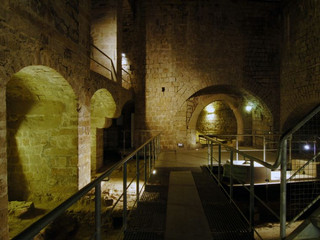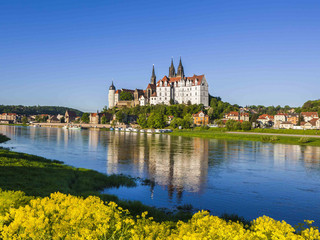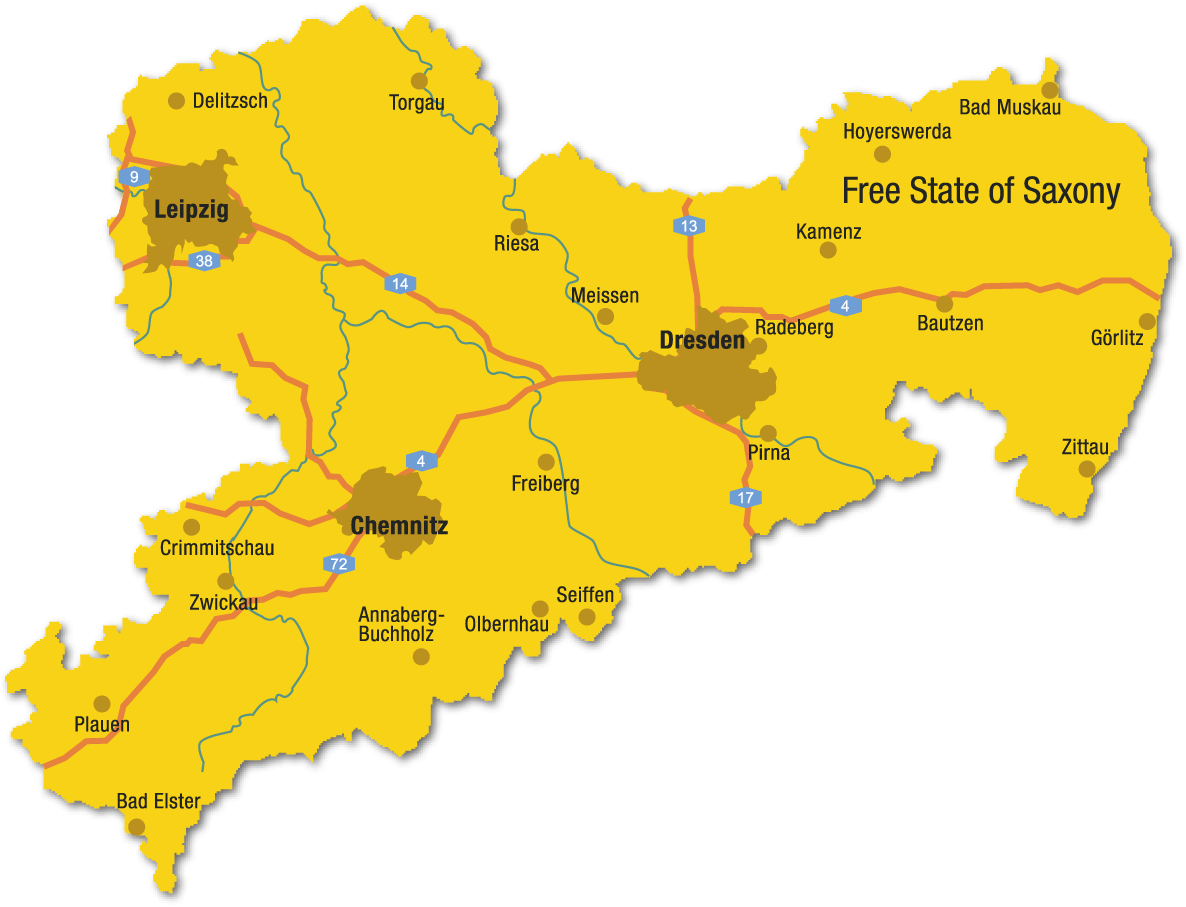Größere Kartenansicht
The invention of the European porcelain is the story of personalities full of curiosity, thirst for knowledge and their affinity to everything beautiful. There is Elector Augustus the Strong, who was of little success in military matters, but enjoyed the pleasures of life all the more. There is the scholar Ehrenfried Walther von Tschirnhaus, who, with his knowledge of physics, mathematics and mineralogy, gave alchemistic experiments a determining goal. And, eventually, there is Johann Friedrich Boettger, apothecary and alchemist from Thuringia, who not entirely voluntarily contributed a great deal to the invention of the white European hard-paste porcelain. It helped the Elector to, at least a little, fill the huge hole in the state’s purse. But he remained his own best customer – it was not for nothing that he diagnosed himself with »maladie de porcelaine«, the porcelain addiction.
Dresden Fortress (A)
In a true spectacle, he succeeded in attracting the world’s attention: Johann Friedrich Boettger pretended to be able to make gold.
For his later misery, the young apothecary was trusted, and the rulers courted him. Eventually, Augustus the Strong prevailed and had Boettger brought to Dresden. A secret place was found in the casemates of the Dresden Fortress where Boettger never made gold, but – jointly with Tschirnhaus – invented the first European hard-paste porcelain in 1708.
In the Dresden Fortress, which Augustus the Strong also termed »Venus Bastion«, one can still explore the cannon yards, underground bridges and Dresden’s oldest
preserved town gate.
Details on the Dresden Fortress
Further to Station B – Meissen Albrechtsburg Castle, approx. 27 km


Albrechtsburg Castle (B)
As early as in summer 1710, Augustus the Strong relocated the manufactory to Albrechtsburg Castle in Meissen. There was sufficient space there and, first of all, the recipe of porcelain-making could be kept a well-hidden secret there.The time of the porcelain manufactory is revived in the new permanent exhibition – short and exciting stories told before the space-filling background sound made by the workmen. In the digital laboratory, you can try your hand, have a go at making porcelain and have your self-made pot fired. The extraordinary architecture of this first palace building in Germany and a »painted picture book« will also let you know something about the history of its rulers and lands.
Details on Albrechtsburg Castle
Further to Station C - Dresden Zwinger, approx. 26 km
Dresden Zwinger (C)
All the splendor of the White Gold can be admired in the Porcelain Collection in the Dresden Zwinger. The majority of the collection comprising 20,000 pieces was gathered by Augustus the Strong. What can be seen are the life-size monkeys and lions of porcelain from the early Meissen production and the finest of traditional East-Asian porcelain dating from the 17th and 18th centuries. The collection ranks among the largest and qualitatively most precious of its kind.
At the entrance of the Porcelain Collection, in the Glockenspiel Pavilion, 40 porcelain bells from the Meissen Manufactory sound tunes by Vivaldi or Carl Maria von Weber several times a day.
